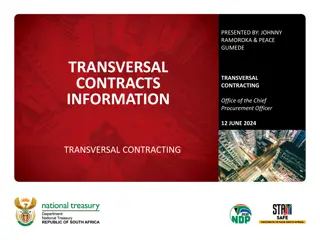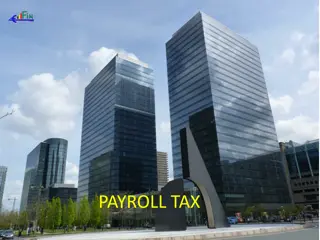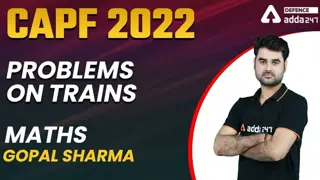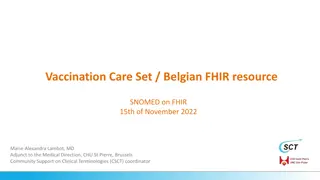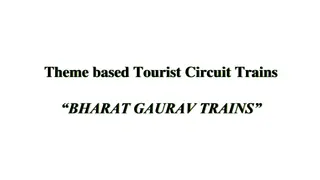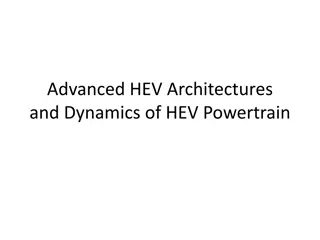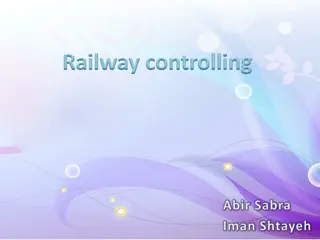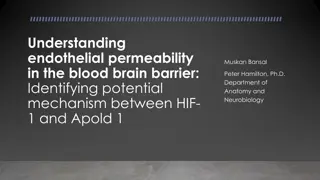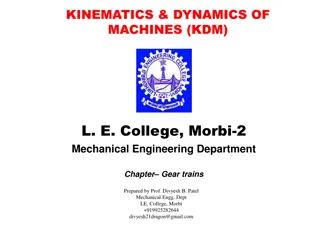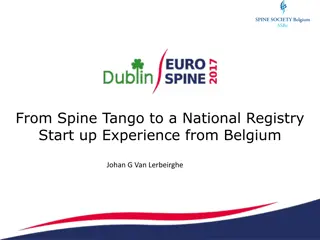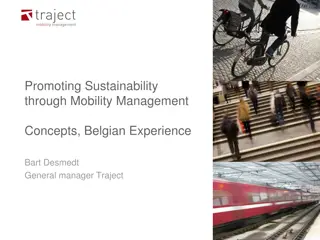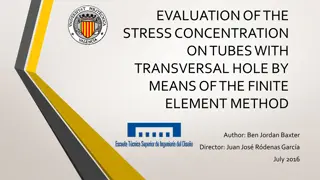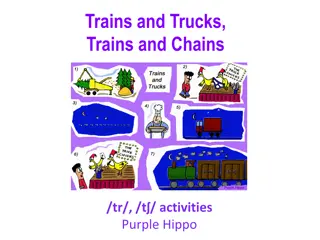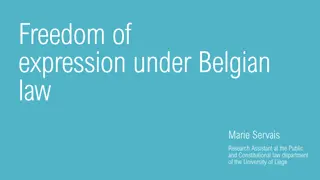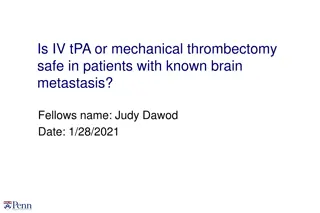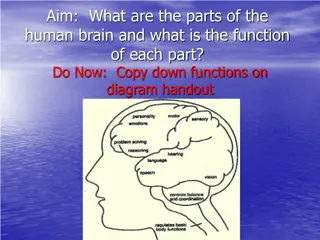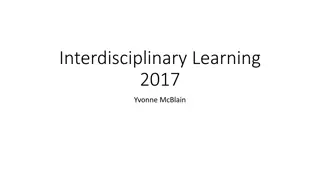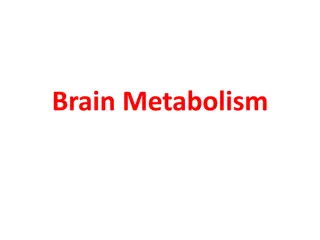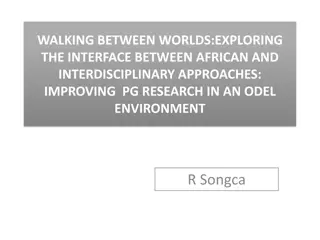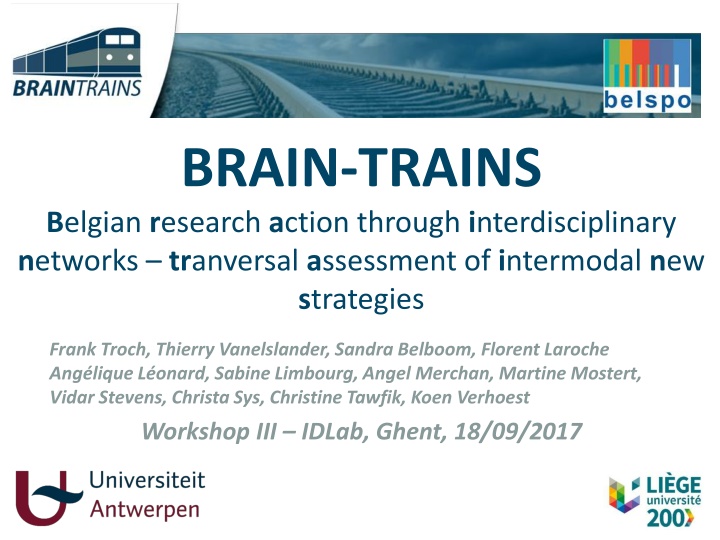
BRAIN-TRAINS Belgian Research - Interdisciplinary Transversal Assessment
This research delves into the Belgian intermodal transportation strategies through interdisciplinary networks. The workshop agenda includes environmental, economic, and regulatory analyses along with project reviews. The project aims to understand the impact of various transportation modes on the environment and the economy. Discussions on governance, organization, and scenario development are key components.
Download Presentation

Please find below an Image/Link to download the presentation.
The content on the website is provided AS IS for your information and personal use only. It may not be sold, licensed, or shared on other websites without obtaining consent from the author. If you encounter any issues during the download, it is possible that the publisher has removed the file from their server.
You are allowed to download the files provided on this website for personal or commercial use, subject to the condition that they are used lawfully. All files are the property of their respective owners.
The content on the website is provided AS IS for your information and personal use only. It may not be sold, licensed, or shared on other websites without obtaining consent from the author.
E N D
Presentation Transcript
BRAIN-TRAINS Belgian research action through interdisciplinary networks tranversal assessment of intermodal new strategies Frank Troch, Thierry Vanelslander, Sandra Belboom, Florent Laroche Ang lique L onard, Sabine Limbourg, Angel Merchan, Martine Mostert, Vidar Stevens, Christa Sys, Christine Tawfik, Koen Verhoest Workshop III IDLab, Ghent, 18/09/2017
Workshop agenda 13:15 13:45 13:45 14:30 Environmental impact VGZ 1.1 OR Governance and organization Lesloklaal 1.1 (plenary) 14:30 15:15 - Regulatory analysis VGZ 1.1 OR Operational analysis Leslokaal 1.1 (plenary) 15:15 16:00 - Economic impact Leslokaal 1.1 (plenary) OR Environmental impact VGZ 1.1 16:00 - - - Project review and current state Break-out session 1 Break-out session 2 Break-out session 3 Conclusion and networking drink 2/12
Agenda Introduction Problem statement Project context and research goal Introduction Part 1: SWOT analysis Methodology Results Part 1 Part 2 Part 2: Scenario development Methodology Results Conclusion Conclusion and current research 3
Introduction Problem statement Introduction European Commission White Paper 2011: Part 1 Roadmap to a Single European Transport Area Towards a competitive and resource efficient transport system Goal: 30% of road transport over 300 km towards rail and inland waterways by 2030 (50% by 2050) In a context of growing transport demand With a 60% emission reduction target Part 2 Conclusion 4
Introduction Problem statement Introduction How? Providing an efficient core network for multimodal / intermodal transport Standardization Interoperability FLEXIBILITY One-stop-shop Establish a level-playing field for cross-border freight Part 1 Part 2 Conclusion 5
Introduction Problem statement Introduction Intermodal data? Part 1 Part 2 Source: Eurostat Conclusion AVERAGE YEARLY GROWTH (1990 2011) ROAD RAIL INLAND WATERWAYS 2,63% 0,48% 4,23% Source: Meersman et. al. (2012) 6
Introduction Problem statement Introduction Limited quantitative research Focus on single mode of transport Lack of cooperation Uncoordinated policy documentation Part 1 Part 2 Conclusion I ve read every last one of them. 7
Introduction Problem statement Introduction Vision Figures Part 1 Literature Part 2 Conclusion BRAIN-BE 8
Introduction Project context and research goal Scenario's & SWOT Optimal corridor and hub development Introduction Macro-economic impact Sustainability impact Market regulation Public adminstration and governance Part 1 Part 2 BRAIN-BE Effect of possible rail freight transport developments Operational framework with indicators Define strategies to create success story Conclusion 9
1. SWOT analysis - Methodology Introduction Part 1 SWOT development: Delphi-technique Part 2 SWOT Survey: Frequency tables, Modus & H-index Conclusion 17 final SWOT elements 10
1. SWOT analysis Results STRENGTHS Larger capacities and higher payload of containers Economies of scale Reduced costs and externalities (over long distances) Introduction Part 1 Direct emissions (CO2 in g/tkm) Source: Ecoinvent(2014) Road Rail 11.5 IWW IWW 29.6 Rail Road 55 0 10 20 30 40 50 60 Liberalization of the market In Belgium started since 2007 2017: 12 licensed operators Relation between GDP and rail freight / intermodal transport Mutual relationship Decoupling Part 2 Conclusion 11
1. SWOT analysis Results WEAKNESSES Weak network access and lack of flexibility Long life-cycle of equipment & infrastructure Priority of passenger traffic Time necessary to book a slot Low network accessibility High investments & high operating costs Collection, distribution, hauling and transhipment Complex pricing strategies Difficult to compare alternative options Missing (capacity) links Will be resolved ? Introduction Part 1 Part 2 Conclusion 12
1. SWOT analysis Results OPPORTUNITIES Consolidation of flows Economies of scale A Single European Market / Transport Area European freight corridors One-stop-shop Future road taxes Decreasing road attractiveness Standardization and interoperability Increased flexibility and service level Introduction Part 1 Part 2 Conclusion 13
1. SWOT analysis Results THREATS Savings Slow modernization Cancellation or delay infrastructure projects Impossibility to consolidate / Low interoperability Limited cooperation Passenger traffic interference Priority regulation European monopoly / duopoly A good or a bad thing ? Introduction Part 1 Part 2 Conclusion 14
2. Scenario development - Methodology Introduction Part 1 Limited number of parameters Three scenarios (Best/Medium/Worst) Part 2 Explorative, plausible future developments, consistent Conclusion Forecasting, predictions Time horizon: 2030 15
2. Scenario development Results Introduction Rail Road: -20% demand: 17,000 mio tkm (+133%) White Paper (EC 2011) shift goal : ACHIEVED Rail transport emissions -40% Increase road taxes Part 1 Road: -10% BEST CASE SCENARIO Part 2 10 rail operators (+4) Rail energy consumption -20% Conclusion Road: -10% Road: -10% Infrastructure and maintenance cost -20% Rail Operational cost -30% 16
2. Scenario development Results Introduction Rail White Paper (EC 2011) shift goal : NOT ACHIEVED Road: -40% demand: 8,000 mio tkm (+10%) Rail No transport emissions -10% additional road taxes Part 1 Road: -30% WORST CASE SCENARIO Part 2 2 rail operators (-4) Rail energy consumption -10% Conclusion Road: +10% Infrastructure and maintenance cost +10% Rail Road: -10% Operational cost +20% 17
2. Scenario development Results Introduction Rail Road: -20% White Paper (EC 2011) shift goal : IN PROGRESS demand: 12,000 mio tkm (+64%) Rail Limited increase road taxes transport emissions -20% Part 1 Road: -15% MEDIUM CASE SCENARIO Part 2 4 rail operators (-2) Rail energy consumption -15% Conclusion Road: -5% Infrastructure and maintenance cost -5% Rail Road: -10% Operational cost -10% 18
Conclusion Consolidation Introduction Standardization Interoperability Part 1 2030 goals Demand + 133% Flexibility Part 2 Flexibility & attractiveness Technology Sustain- ability Savings Conclusion Road vs Rail Competition IWW vs Rail Market competition 19
Current research Introduction Part 1 Part 2 Conclusion 20
Thank you for your attention. Questions? Break-out 1 Break-out 2 Break-out 3 Environmental(VGZ 1.1) Regulatory(VGZ 1.1) Environmental(VGZ 1.1) or or or Governance(plenary) Operational(plenary) Economic(plenary)

